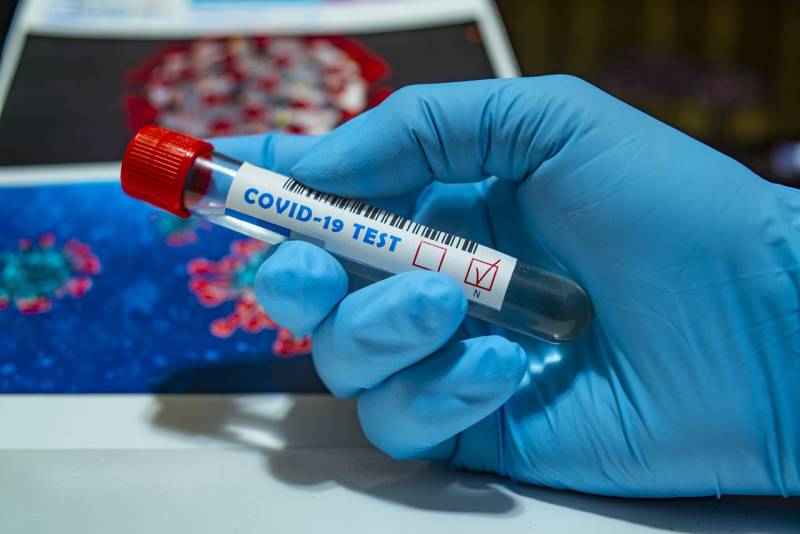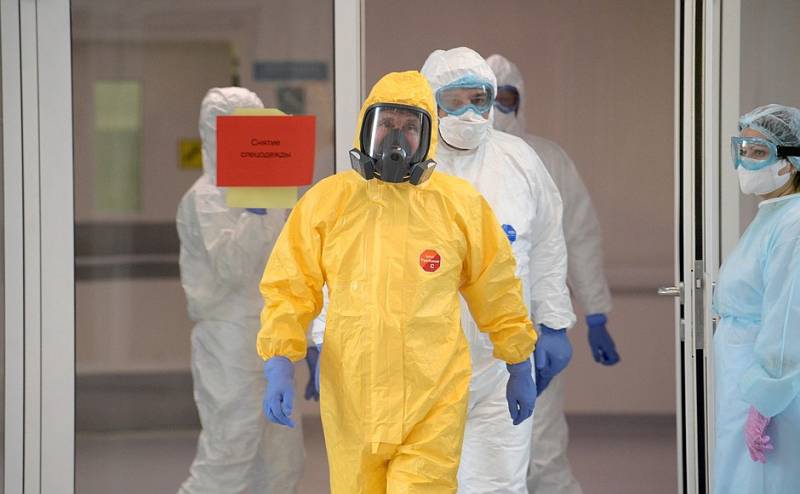Special immunity? The United States does not believe in low mortality from COVID-19 in Russia
They say something is missing
The first to sound the alarm about Russian "statistical insidiousness" in the New York Times and the Financial Times. It was stated that in Russia mortality from coronavirus was underestimated by at least 70% in an attempt to justify the inefficiency of its own medicine. A rather tough reaction followed with demands for confirmation by facts from both the Russian Foreign Ministry and parliamentarians, but there was no intelligible comment from the Americans. The Ministry of Foreign Affairs even had the idea of depriving some American media representatives of their accreditation (they have postponed this issue for now).
At the same time, the World Health Organization expressed its unequivocal position: in Russia, there were no cases of juggling the facts of the victims of COVID-19. But the United States does not particularly trust WHO now and decided to allocate a targeted grant of $ 250 thousand to finance the investigation, which would explicitly accuse the Russian authorities of underestimating the true scale of mortality. The fact is that Americans record a mortality rate of about 6%, while they are world leaders both in the number of dead and infected. And Russia is now in third place among those infected (Brazil has recently been missed ahead), and mortality from coronavirus there is a little over one percent. On average, in the Russian Federation they die from COVID-19 7,6 times less than in the world. Either there is something wrong with the diagnosis of the causes of death in the United States, or Russia is clearly underestimating the statistics. There is also a third explanation: the American health care system is chronically unable to cope with the epidemic, many die from the lack of necessary medical care.
But it is much more effective to choose in this situation the option with Russia deceiving everyone. The world community is already accustomed to the stereotype of Russian “deceit” - just remember the Skripals case, doping scandals and so on. It is surprising why Italians with the British with a similar claim do not appeal to the Americans? Nevertheless, almost 14% mortality from COVID-19 is recorded in their countries, that is, every 7 infected people die! Perhaps in the USA their 6% were also artificially “twisted”? You can still advise Americans not to confine themselves to Russia alone and allocate money for an appropriate grant to expose Israel. The country also has a suspiciously low mortality rate - only 1,6%, and the number of infected has not even reached 20 thousand people (data as of May 28).
In this stories the small grant amount for such a serious project is surprising - only 250 thousand dollars. Americans either initially do not believe in the success of their own endeavors, or are seriously limited in resources. And it’s not entirely clear what concrete evidence the State Department needs: certain “black” medical protocols that record the “true” mortality rate, or the exhumation of the dead with a coronavirus sample? It seems that in the very near future the grant money will still be used by someone, and you and I will see on the screen the revelations of the “witnesses” of the mass concealment of the true scale of the epidemic in Russia. Or not in the near future, but after a couple of years, when there will be another reason to stab Russia in the international arena.
If we ignore the indignation of the Americans regarding the “tenacious” Russians, the question remains: why do we have such a low mortality rate from COVID-19 relative to other countries? And the answer to it is not as obvious as it seems.
Russian immunity?
Of course, there can be no question of any specific immunity of Russians to coronavirus - infections, by and large, no matter who is attacked from the species Homo sapiens. The low mortality from COVID-19 in Russia has a whole bunch of complex reasons. One of them can be considered relatively low mobility of the elderly population of the country - pensioners simply do not have the means to lead an active lifestyle, and they are the main risk group. In addition, the highest urbanization does not play in favor of Russia (74,4% - 60th place in the world), while the United States ranks 35th in the world ranking with 82,3%. The large crowding of the urban population in the United States has become one of the reasons for this widespread infection. In Russia, with the proper level of preventive measures, many towns are affected by coronavirus no more than seasonal flu. Just because we have a relatively settled lifestyle, without leaving our settlements for years. For example: at the very beginning of the epidemic in the USA, it was enough to look at the maps of the Flightradar online service to understand that the Americans are constantly traveling around the country. From the most provincial town of the United States (in Russia it would be considered a village), you can fly almost to the other end of the country. And such migration has played an evil role, not only for Americans. In Italy, as the virus spread, certain provinces were quarantined. What did the Italians do? They simply left for neighboring regions, settled in hotels, rented apartments, and thereby expanded the distribution area of the virus. For us, firstly, this would hardly have been possible, and secondly, a high-readiness regime was introduced simultaneously throughout the country.
By the way, in support of this theory, the following can be cited: in many regions of Russia, infected shift workers returning home from work have become a real disaster. They are massively monitored, sent for quarantine, then for re-interchange - in general, they can be controlled. Such labor migrations in Western countries are developed to a much greater extent, which has become one of the reasons for this lightning-fast spread of infection.
Now, perhaps, about the most important thing in the dispute with the Americans. Russia is now in second place in the world in the number of tests performed on COVID-19 - on May 26, nearly 9,5 million! For 1000 people, we have an average of 64,52 tests. In the United States, tests made just over 15,1 million, but for 1 thousand Americans only 45,82 tests. The national health care strategy turned out to be correct - to test as many people as possible so that mortality in the end is minimal. For example: in Iceland, “specific” testing for COVID-19 is a record 174,57 samples per 1 people. And the mortality rate is only 0,55%! Someone will say that this is an island state, remote from the world, but the dependence of mortality rates on the number of tests carried out exists without Icelandic data. It is enough to pick up a calculator, find a couple of hours of time and how to dig around the Internet. In any case, such a massive testing of the Russian population can say one thing: the problem of a pandemic in our country was approached with high professionalism and attention to the people. And 250 thousand. US grant can not do here.

Source: img.tyt.by
Finally, another important factor in this difference in mortality in the coronavirus in the Russia-USA system is the confusion in determining the cause of death. A huge drawback of all the statistics that we now get from the media is the lack of benchmarks in the past. If in Spain, for example, from March 30 to May 28, 2020, 27117 people died from coronavirus, then it is interesting to know how many died from pneumonia and flu last year over the same period. I am sure that the number of deaths will be not much less, or even more. Everything is relative. In Russia, it’s just right to talk about the “healing” effect of COVID-19 for the population - in general, fewer people die. Now about the diagnosis. In Italy and Spain, such gigantic mortality rates arose not because the virus is very insidious, but because if the deceased was diagnosed with coronavirus in the blood, then he was automatically counted among those who died from COVID-19. Only on April 16, WHO issued a more or less intelligible instruction on the methodology for classifying a deceased person as a victim of COVID-19. Countries, firstly, before that, managed to accumulate their own large statistics of “approximate” conclusions, and, secondly, the methodology is very ambiguous and complicates the unambiguous determination of the cause of death. It should be noted separately that neither for ordinary flu, nor for deadly H2N3 there were no such instructions. And older people with serious heart, lung, and other chronic ailments died (and die) in hospitals from pneumonia and various forms of flu. But no one ever put the cause of death a viral infection - they always managed to exacerbate the underlying more serious disease. And now WHO, following the example of Italy and Spain, recommends putting the cause of death of COVID-19 in any deceased if this virus is detected in his blood. Of course, if the unfortunate is not a suicide or a victim of an accident.
In addition, even in Europe, doctors have different approaches to assessing mortality from coronavirus. So, in France mortality in nursing homes is taken into account, but in the UK it is not. How then to compare the data?
The result of the dispute between the US State Department and the Russian Ministry of Health may be the thesis that in our country, it seems, now they are closest to the assessment of true mortality from the notorious coronavirus. And if this is really about 1%, then what universal quarantine can we talk about?


Information